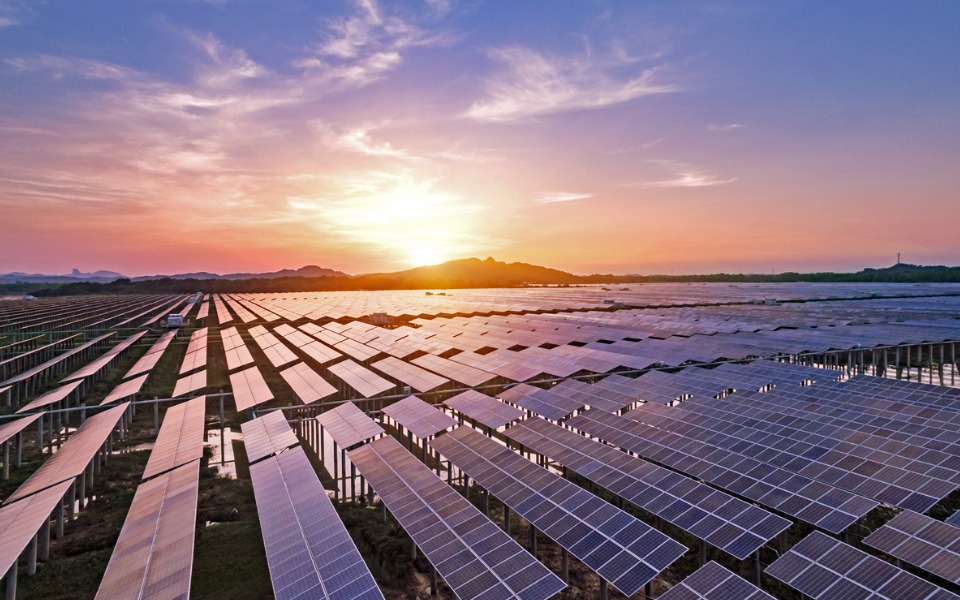
Gujarat shows the way in solar rooftop power generation
Gujarat, the home state of prime minister Narendra Modi, is leading the country in solar rooftop energy generation (domestic) with more than 50,000 such plants coming up across the state, according to the Ministry of New and Renewable Energy (MNRE).

Gujarat, the home state of prime minister Narendra Modi, is leading the country in solar rooftop energy generation (domestic) with more than 50,000 such plants coming up across the state, according to the Ministry of New and Renewable Energy (MNRE).
Also read: How you can make the planet a cleaner, greener place in the New Year
It is pertinent to note that solar is the most important renewable energy source (others are wind, biomass and small hydel plants) that is vital if we have to reduce our carbon dioxide emissions and mitigate the negative effects of climate change.
The Modi government had set an ambitious target of generating 175 GW of renewable energy by 2022 of which, 100GW is supposed to come from solar energy. Of the 100GW, 60 GW is likely to come from large-size solar power plants while 40 GW has to be generated from rooftop units.
While India is way behind meeting its target of solar power generation, whatever gain we have made so far has come from large-size solar energy generation units. Rooftop solar generation units are way behind their assigned targets.
Gujarat is the only state that offers a silver lining in this otherwise gloomy scenario. The state recently introduced a new solar energy policy for 2021 that allows the domestic electricity consumers to commercially lease their rooftops for power generation purposes.
The Federal takes a look at the state of solar power generation across the country and where do they stand when it comes to promoting solar rooftop power generation.
Watch: Did pandemic affect climate change in 2020?
Where do the states stand?
At the beginning of 2021, Gujarat introduced a new 5-year solar power policy, which allows the consumers to rent their premises or roofs to third parties for electricity generation. The decision is likely to encourage further the installations and use of renewable energy in Gujarat. Already, Gujarat ranks top in the list of states with most number of solar rooftop plants (look at the graph).
Gujarat is leading the renewable energy movement in India as of today, suggests the data. The western state has more than 60% (63.68 percent) or 50,915 solar rooftop installations in the country. This accounts for about 177.67 MW power generation in the state each year. Similarly, Maharashtra and Tamil Nadu have higher installed capacities of about 40 MWs together.
The top three states that include Maharashtra and Tamil Nadu along with Gujarat account for more than two-thirds of the solar rooftop installations in India, as per the MNRE data. These three states have an installed capacity of about 217 MW as of March 2020. According to MNRE, 13 states have more than a thousand rooftop installations. Nine states have zero installations that include Meghalaya, Nagaland, Sikkim, Tripura, Goa, Lakshadweep, Daman & Diu, Dadra & Nagar Haveli and Andaman & Nicobar Islands.
The northeastern states have 824 such plants installed with a capacity of 3.63 MW in total. Manipur has a maximum 431 such installations while Assam has 127 and Mizoram has 265. This forms about one per cent of the total installations in the country.
Where does India stand in the world listing?
India stands fifth in the world among the countries with a maximum installed capacity of solar rooftop installations. China has the highest capacity of 205 GW followed by Japan (71.3 GW), the USA (63 GW) and Germany (49.78 GW) among other countries.
India has put the target of reaching 100 GW solar capacity by 2022. Italy, United Kingdom, Australia, France, Spain and Turkey are just a few other countries to have substantial solar rooftop capacity.
According to the data provided by National Solar Energy Federation of India (NSEFI), India had only 3 MW of solar installed capacity in 2008 that increased more than three-fold within one year. Further, it has observed exponential growth for the next 10 years. The installed capacity of the country reached 28,050 MW by the end of 2018. Later in the next two years, the growth slowed down a bit. As of today, the solar rooftop installed capacity of India is 35,600 MW as per NSEFI.


